Art and Materialisms: At the intersection of New Materialisms and Operaismo
In this essay Emanuele Braga, founding member of Institue of Radical Imagination, expands on a central proposition within the Art for Radical Ecologies (Manifesto) namely the possiblity to actualize the Italian revolutionary theory of operaismo in the context of rapid climate breakdown, whilst politicising the theoretical claims of New Materialisms that argue for the entangled realtionship between human and other than human beings.
Why make art while organizing the struggle?
The ‘Art for Radical Ecologies Manifesto’ originated in the Venice Climate Camps and debuted at the World Congress for Climate Justice in Milan.1 We chose to gather as an international community of artists in movement assemblies within the context of radical eco-activism to discuss our positioning in the art world. In the process of co-writing this manifesto, we engaged in organizing marches, managing clashes with the police, trespassing on construction sites and private properties and sharing moments of communal life with activists from around the world. It’s a curious trajectory that is worth analysing. It’s probably worth delving into the folds of this strange overlap between the world of contemporary art, the production of signs, direct action, struggle, and the production of statements.
The first thing that catches the eye is a dual movement: art criticizes the toxicity of the productive system in which it is immersed, and, on the other hand, art finds meaning in the ritual of struggle.
In this brief text, I would like to attempt to assemble a concept of materialist art by combining two theoretical traditions operative in my history: operaismo, and what seems interesting to me about New Materialisms. To actualize operaismo in the era of climate collapse and politicize the New Materialisms, avoiding their less interesting drifts: this is the direction I assign to this intervention.2
By New Materialisms, I refer to that theoretical trajectory that has questioned the colonial approach of humans to nature and other living species, constructed a critique of the modern project from the concept of agentic matter, proposed an interdependent generative and ecosystemic vision of human and nonhuman relationships and challenged a competitive neo-Darwinian evolutionism in favour of a symbiotic and cooperative view of the bios.3 This perspective has had a significant influence in the last decade on contemporary aesthetics. Contemporary art has witnessed a new renaissance of artistic productions and programs in which the situated perspective of humans seeks new alliances with a viewpoint no longer exclusively human. The bios has entered art as much as matter, machines and artificial intelligence. Museums and art programmes have become the aesthetic and perceptual field where humanity interacts on equal (or pretending to be equal) terms with nonhuman subjectivities in a continuum that reveals their potentials and contradictions.
In mostly different realms, eco-activism has experienced a great resurgence since 2019, with the emergence in Europe of Fridays for Future (FFF) and Extinction Rebellion. However, this is just one of the latest waves within a rich and complex history that involves diverse territorial struggles for climate and ecology with very heterogeneous theoretical references. From the eco-Marxism of Ende Gelände to the non-violent disobedience of Just Stop Oil, from eco-socialism and degrowth to anti-speciesism, from Indigenous perspectives of Yanomami to those of the Yasuni, from those opposing pipelines in the US with Standing Rock to the Congolese activists of No East African Crude Oil Pipeline (NO EACOP), from the eco-anarchists of Stop COP City Defend Atlanta Forest to Soulèvements de la Terre in France... to name just a few: the global eco-activist constellation is vast and sprawling, with partly converging but different theoretical and cultural analyses.
New Materialisms and eco-activism in comparison
These are two areas that have, to some extent, culturally contaminated and interpenetrated each other, but they also live with implicit and explicit distances and fractures. On one side, theorists and activists rooted in climate movements have perceived the institutionalization of New Materialisms in artistic and cultural production as too depoliticized.4 They criticize the excessive emphasis on granting nonhumans agency, which leads to depoliticizing human action and making historical power relations invisible. Aesthetics inspired by New Materialisms often limit themselves to decolonizing the human gaze on nature and dissolve our interdependence into generative processes that stop at speculation alone. In other cases, they engage in ventriloquism by attributing subjectivity to the nonhuman, ultimately projecting the human perspective onto it, speaking on behalf of animals and plants, and attempting, in the end, to anthropomorphize them. In some instances, they lead to a dissolution of human ethics into the transcendental power of the nonhuman, condemning any politics to contemplate the immeasurable.
In general, the cultural terrain inspired by New Materialisms rarely speaks the language of anticapitalism or political conflict to overturn power relations. It seldom communicates the language of antagonism that opposes fossil capitalism, the rise of fascism in response to the emergency of migration flows and the spread of wars of extractivist and colonial origin.
On the other hand, artists and intellectuals inspired by New Materialism have opened up a speculative and generative utopian field, breaking away from the imagery of the social struggles of the twentieth century. It is a culture that needed to break down cultural barriers rigidified by grand ideologies. It is a culture that has leaned on the experimentation and freedom we’ve called postmodernism: to unveil the codes of dominance, one must let them free and recombine them without censorship. It is a culture that silently emerged in reaction to the ineffectiveness of the cycle of struggles. Mapping new paths in a generative way, taking on another perspective, makes sense in light of a generational consideration: fighting against capital has only strengthened it, making it pervasive and inevitable.
On one side, there’s a sensitivity to speculation, the post-ideological and eagerness for new non-anthropocentric generative processes. On the other side, there’s an intolerance to PM10 (inhalable particulate matter with adverse health effects), concern for melting glaciers and a willingness among activists to blow up pipelines with their own hands to avoid roasting on a soon-to-be suffocated and sterile planet. On one side, there’s sensitivity to nature as an active subjectivity to collaborate with and generate interdependencies. On the other side, there’s a more apocalyptic approach, concerned about the consequences for humanity of mismanaging natural resources (mostly considered inert and non-agentic). The fact remains that those experimenting with alliances between fungi and mycelium usually speak a different language to those getting arrested in roadblocks or for blowing up a pipeline.
Operaismo and ecology, and what we mean by militant research: coresearch, social worker, and constituent resistance
Listening to these different readings of reality, these two tensions, both very prolific in contemporary times, I wondered how operaismo and the political tradition of Italian Autonomy could operate within the ecological collapse. Two or three generations after the Italian seventies, I am part of those activists who experienced politics in the social centres of the nineties: we measured ourselves with the concept of globalization through the Seattle movements, we experienced the repression of the fascist state during the G8 counter-protests in Genoa in 2001, we organized new seasons of antimilitarism, mobilized precarious workers as a new political subject in EuroMayDay and later self-organized cultural precariousness in the post-occupy phase following the 2008 financial crisis to better define the innovative power of antagonistic self-organization in artistic production as a constituent process. It is on this progression of tides that I saw the new feminist wave of Non Una di Meno emerge in 2016, followed by queer transfeminisms, Black Lives Matter (BLM) in 2014–20, a new cycle on decolonial processes, and in 2019, a new wave for the climate emergency with FFF and Greta Thunberg.
Within the Institute of Radical Imagination, we have initiated a reflection on the concept of militant research in the field of artistic production. It is on this concept that I believe various tools from the Italian operaismo tradition can be grafted.
One key concept is that of coresearch, which for Romano Alquati was the methodological tool for the construction of knowledge by situating the investigation in the oppressed subject (which at that time was the working class).5 Through investigation and the concept of coresearch, we built organizations and generated another antagonistic process that, being resistant, is an alternative process to the system of domination and oppression. The concept of coresearch may seem rather innocuous and almost banal at first glance, but seen more closely, it is revolutionary. It’s not simply about acquiring information from the perspective of the pool you decide to interview, as qualitative and quantitative research is considered in academic sociology. The concept of coresearch asserts that knowledge is produced in the commonality situated in the oppressed subject. The concept challenges academic knowledge, the dialectic and the rationality of history written by the winners, and places the construction of knowledge in finiteness, on the edge of becoming other than the oppressed, in the immeasurability (Negri) of that restless and turbulent antagonism that generates vision through rejection, conflict and continuous exodus.
We conducted coresearch on the precarious subject and we conducted coresearch on the vulnerable subject, crossed by contemporary anxiety about the ecological crisis. Conducting militant research in the spaces of eco-activism for us meant generating knowledge, resisting the forces that are oppressing the planet, in order to perceive the world in another way.
Another key concept of Italian operaismo, crucial in my opinion for tracing that line of escape from orthodox Marxism, was that of the social worker (Tronti, Negri). The revolutionary, oppressed, resistant subject is no longer only in the factory but is the worker of a diffuse factory, which in post-Fordism coincides with the social field. In post-Fordism, capital extracts value not only from the factory but from the life of society as a whole. As feminism has always pointed out, capital is interested in exploiting the reproductive cycle, the once considered free time, affection, desiring impulses and bodies. As evident in technological development, capital aims to control the social body, its behaviours through digital algorithmic control, logistics and mobility, sexuality, mood and a valorization of reproductive life cycles. It is time to assert that capital’s interest in bare life does not only concern the social, human life but also the life cycles of other than humans. Opening this trajectory to nature and nonhuman ecosystems means denouncing how capital’s dominion is also exploiting animals and the reproductive cycles of the nonhuman. And at the same time, through coresearch, we can build knowledge of the situated and more-than-human oppressed subject.
By conducting coresearch in the vulnerable subject and simultaneously in the struggle for radical ecology, we asked ourselves who makes up this subjectivity? We wondered if the field of this assembly also includes a nonhuman subjectivity? Is it possible to conduct coresearch within a more-than-human collective?
Hence, the third concept so central to Negri’s theoretical analysis: resistance comes before capital. And resistance is constituent. This statement seems counterintuitive. It is easier to think that capital organizes technological dominion, builds factories, organizes exploitation and pollutes the planet, and consequently, the worker resists and fights for better living conditions. Operaismo grafts this conceptual virus that overturns this version of history: without this resistance, capital would be nothing. It is not capital that guides history, but the immeasurability (dismisura) of life. The worker can do without capital, while capital cannot do without living labour. Negri makes clear the power of this reversal. The dynamics on which domination develops need resistance to be able to valorize it. The continuous creative excess of the oppressed liberation process constitutes the invention at the basis of the concept of technological innovation.
Through this situated perspective in the generative power of conflict, I believe we can recover the equally immanent concepts of New Materialisms but reposition them within historical materialism. An operaista reading of New Materialisms, I believe, allows us to recognize the ontologically immanent generative process of ecological subjectivity but to ground it at the same time in the liberation struggle of the oppressed. We are materially in nature, but we generate the world from a common liberation process.
I found in the Marxist heresy of operaismo concepts capable of guiding us through the turbulent era of the ecological crisis and situating us immanently in the becoming of matter in history.
The art of becoming common: technologies for dissident bodies
What role does art play in the ecological collapse? An orthodox Marxist response to this question might posit that art is nothing more than a capitalist creation to produce surplus value through a fetishistic use of our imagination as a general intellect.6 The artwork is seen as pure money, often moving in those higher layers of the atmosphere called tax havens, handled by an elite where large capital concentrations converge and on which the global chains of value depend.
Art, as we conceive it today, did not exist before colonialism, the birth of states, steam factories and financial markets. Art was a hand on the wall, a multispecies monster, a ritual, a religion, a psychoactive collective celebration, craftsmanship, tool invention, productive idleness opposed to the repetition of things to do simply because they were useful. Nothing to do with collectors, galleries, museums, calls and applications.
What I will attempt here is to rename art starting from this refusal but trying to give it a common name. No nostalgia for the recovery of a primitive and ancestral role, and at the same time, a strong rejection of the function of art in the commodification of contemporary techno-financial turbo-capitalism: but at the same time, an attempt to redefine the territory of art in its capacity to imagine other worlds and, at the same time, be the finite subject that materially generates its perception on the brink of the conflicting becoming of time.
Over the years, two concepts have seemed to operate in the construction of what we call the imaginary. The first is the concept of the common, and the second is that of technology.
To define the concept of the common, I always refer to Antonio Negri.7 Common is a name that shapes matter (Negri). In the self-organization processes of Art Workers and then in the movement for Common Goods in Italy, which emerged after the financial crisis of 2008, we often developed and used the term commoning, making common. How did we define this concept? For those assemblies of commoning artists, it meant building after destroying, assembling from a disassembly movement, destituting to institute. And what, in my opinion, did we mainly want to dismantle? I believe: our desiring structure. As in self-awareness (feminist autoconscienza) assemblies, in that process of sharing our problems, we learned that the things we considered important were not so important after all. The reputational economy with high added value, competition with curricula, visibility in the market, the privilege of being white, male, human species, the feminization of the body, a managerial and planning culture, the monoculture of the project, technofetishism, ableism, an extractivist approach to natural resources... all these structures, devices that train our bodies to act and build our way of seeing, are ultimately debatable. During the pandemic, movements coined this slogan: ‘We don’t want to go back to normal because normal is the problem.’ We realized that these cultural devices are cumbersome and oppressive. We had the feeling that by dismantling this way of seeing the world, space opened up to perceive it in another way. This different perception can only be generated through the practice of this resistance. And this resistance, this physical training in the exercise of emancipation, is a social gym, a becoming common. The concrete singularity of our practices trains, opens materially and generates another common imagination. That’s why I am against art that stops at speculation, avoiding awareness of what it generates in physical, real and material relationships. Because through speculation alone, we cannot modify our sense organs, or train ourselves to a different common feeling. To perceive in another way, we must generate perceptual alliances and interdependencies that materially shape the world differently and be able to conflict on real power relations. And all this does not happen on a Cartesian plane but on the brink of the precipice. We must bet that we can do without the certainties that generate oppression, and in this gesture, we see what we couldn’t see before. Only by cutting the branch we are leaning on can we generate other planes of support.
In this sense, the plane of aesthetics enters the plane of ethics, and the plane of ethics enters the ontological plane. Only by doing differently (ethics) do I perceive differently (aesthetics), and by perceiving differently, we generate the real (ontology). Only by acting materially in power relations (politics) do we build another imaginary (art), and we generate a world post and against capital (Gaia).
The second central aspect in aesthetic and ecological criticism is that of technology. The ecological problem we need to address is the technical construction of our perception. First of all, we must understand that our vision, perception, desire and imagination are materially constituted. And the technique of building our bodies immersed in an environment generates our optic nerve, neural network, determines our attention, mobility, sexuality, affections and desires. If the technique of building our being in the world is toxic, our perception develops within this toxicity. Theorists dealing with the digitization of society, how digital and algorithmic calculation are shaping the human and nonhuman relational field, note that one of the first consequences of a world controlled by capitalistic digital platforms is that we forget not only to love and to know how to do but above all to think.8 The fact that we are in processes where our behaviours are strongly automated leads us to stop perceiving that there is an alternative to what we are accustomed to doing. A strong political simplification, binary polarization of public debate, homogenization of trends and desires, progressive control of visibility through censorship, are just some of the consequences of an automatic society. The effect is a sort of psychopathology of an exhausted social body. The effect is similar in human bodies as in nonhuman nature: the progressive elimination of biodiversity. The promotion of exceptionality is exacerbated, and as a result nothing is truly different anymore. The impoverishment of agricultural soil is not dissimilar to the flattening of cultural debate. Everything is promoted as novelty, while everything is perceived as indifferent. Technology promotes the possibility of controlling the genome with an infinite combinatorial possibility, and the effect is endless hectares of GMO monocultures devouring the biodiversity of the forest, to feed intensive industrial farming in endless identical and suffocating cages.
So, the role of art is to occupy the imaginary by de-automating the machine that is building our bodies. To proliferate biodiversity, perceptions, alternative aesthetics, we must operate at the infrastructural level, sabotaging, dissenting, causing the technical constitution of capital to jam. And we can only do this as technically interdependent subjectivities in a more-than-human dissident environment.
For an anti-capitalist and more-than-human art
I conclude with a comment on the third part of the ‘Art for Radical Ecologies Manifesto’. It is necessary to be very concrete if we want to speak the situated language of conflict.
We are in a moment where the largest international governmental institutions such as the UN and the failures of the Conference of the Parties (COPs) have long been asserting both that the climate is in irreversible collapse and that capitalism is not the solution.9 From the first COP (1995) to today, we have seen how the attempt to entrust the Ecological Turn to the market has actually coincided with the largest surge in CO2 emissions in human history and the reopening of significant armed conflicts. For this reason, we must strongly distance ourselves from rhetoric that promotes possible Green Capitalism and immediately demand the end of the energy market based on fossil fuels.
Connecting artistic production with ecological collapse implies fighting against the financing of companies linked to coal, gas, and oil and for disarmament. Where capitalism tries to make us dream of technical solutions compatible with extractivism, such as terraforming the moon and Mars, mega vacuum cleaners that capture CO2 from the Earth’s atmosphere, or clean nuclear power plants and electric cars for all, we know that these solutions, even if possible, would strengthen the privilege of very few and would not stop the destruction of the natural ecosystem.
How is this consideration practically implemented at the intersection of art and activism today?
In addition to writing the ‘Art for Radical Ecologies Manifesto’, we have opened a laboratory to create an alternative, eco-activist iconography, a Climate Justice League, that rejects the techno-solutionist imagery proposed by capital.10 We have created eco-warrior superheroes, turned them into puppets to bring to protests to open construction sites that are destroying our mountains, created new flags, choreographed dance moments of conflict, drawn flying monsters to block large cruise ships and practiced the art of building barricades and subverting the language of capital.
In conducting militant research, we have understood the urgency of reconnecting contemporary climate struggles with decolonial ones.11 It would be hypocritical to interrupt the cycle of colonization of humans on the planet when colonial policies are operative and a supporting arch within human society.
After 7 October 2023, it is Greta Thunberg herself who does not hesitate to publicly align with Gaza, and young people from Just Stop Oil who tweet ‘JUST STOP GENOCIDE’. We must recognize that at this moment, the genocide in progress in Palestine is the culmination of that colonial hypocrisy we have discussed. Humanity is at a crossroads: to truly dismantle that anthropocentric ideology based on colonialism, it must pass through the resistance that the Palestinian people have always been enacting.
This opens up to a concrete campaign that we should act in a confrontational manner within artistic production, starting from museums and major art institutions, demanding that they boycott large corporations linked to fossil fuels and weapons production. Too often, behind the economy of contemporary art, there are significant funding interests and a lobbying pressure network precisely coming from major corporations linked to oil and arms. In the deepest ecological crises, armed conflicts arise for control of territories, and often this determines the strongest forms of censorship, McCarthyism and control of media, cultural and artistic production. We must ask artistic institutions for a permanent strike against toxic philanthropy: we need new institutions for a materialist art that builds a more-than-human eco-front against colonialism, war and capitalism.
Related activities
-
HDK-Valand
Climate Forum I
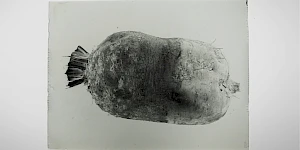
The Climate Forum is a space of dialogue and exchange with respect to the concrete operational practices being implemented within the art field in response to climate change and ecological degradation. This is the first in a series of meetings hosted by HDK-Valand within L'Internationale's Museum of the Commons programme.
-
–Van Abbemuseum
The Soils Project

‘The Soils Project’ is part of an eponymous, long-term research initiative involving TarraWarra Museum of Art (Wurundjeri Country, Australia), the Van Abbemuseum (Eindhoven, Netherlands) and Struggles for Sovereignty, a collective based in Yogyakarta, Indonesia. It works through specific and situated practices that consider soil, as both metaphor and matter.
Seeking and facilitating opportunities to listen to diverse voices and perspectives around notions of caring for land, soil and sovereign territories, the project has been in development since 2018. An international collaboration between three organisations, and several artists, curators, writers and activists, it has manifested in various iterations over several years. The group exhibition ‘Soils’ at the Van Abbemuseum is part of Museum of the Commons. -
–Museo Reina Sofia
Sustainable Art Production
The Studies Center of Museo Reina Sofía will publish an open call for four residencies of artistic practice for projects that address the emergencies and challenges derived from the climate crisis such as food sovereignty, architecture and sustainability, communal practices, diasporas and exiles or ecological and political sustainability, among others.
-
–tranzit.ro
Non-Western Technologies for the Good Life
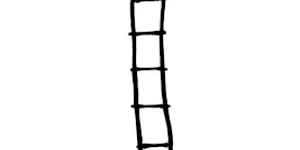
The experimental course ‘Non-Western Technologies for the Good Life’ (November 2023–May 2024) celebrates as its starting point the anniversary of 50 years since the publication of Tools for Conviviality, considering that Ivan Illich’s call is as relevant as ever.
-
Institute of Radical ImaginationMSU Zagreb
Red, Green, Black and White
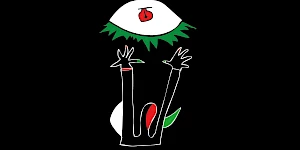
A performative inquiry by Institute of Radical Imagination and MSU Zagreb
-
–Moderna galerijaZRC SAZU
Open Call – Summer School: Our Many Easts
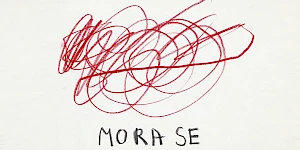
Our Many Easts summer school takes place in Ljubljana 24–30 August and the application deadline is 15 March. Courses will be held in English and cover topics such as the legacy of the Eastern European avant-gardes, archives as tools of emancipation, the new “non-aligned” networks, art in times of conflict and war, ecology and the environment.
-
–Institute of Radical Imagination
Gathering into the Maelstrom
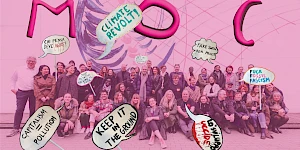
‘Gathering into the Maelstrom’ in Venice at Sale Docks is a four-day programme curated by Institute of Radical Imagination (IRI) and Sale Docks.
-
–Institute of Radical Imagination
Gathering into the Maelstrom (exhibition)
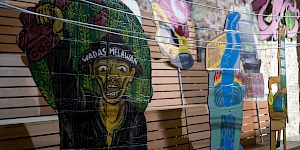
‘Gathering into the Maelstrom’ is curated by Institute of Radical Imagination and Sale Docks within the framework of Museum of the Commons.
-
–M HKA
The Lives of Animals
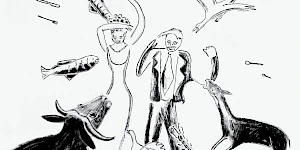
‘The Lives of Animals’ is a group exhibition at M HKA that looks at the subject of animals from the perspective of the visual arts.
-
–SALT
Warm Earth Sounds for Plants and the People Who Love Them

‘Warm Earth Sounds for Plants and the People Who Love Them’ is a series of sound installations by Özcan Ertek, Fulya Uçanok, Ömer Sarıgedik, Zeynep Ayşe Hatipoğlu, and Passepartout Duo, presented at Salt in Istanbul.
-
–SALT
Sound of Green
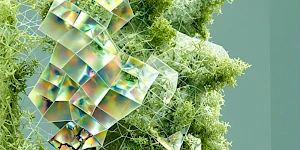
‘Warm Earth Sounds for Plants and the People Who Love Them’ at Salt in Istanbul begins on 5 June, World Environment Day, with Özcan Ertek’s installation ‘Sound of Green’.
-
–Museo Reina Sofia
Open Call: Research Residencies
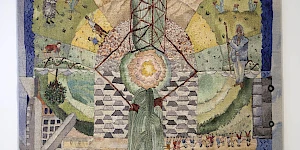
The Centro de Estudios of Museo Reina Sofía releases its open call for research residencies as part of the climate thread within the Museum of the Commons programme.
-
HDK-Valand
Climate Forum II

The Climate Forum is a series of online meetings hosted by HDK-Valand within L’Internationale’s Museum of the Commons programme. The series builds upon earlier research resulting in the (2022) book Climate: Our Right to Breathe and reaches toward emerging change practices.
-
HDK-Valand
Climate Forum III
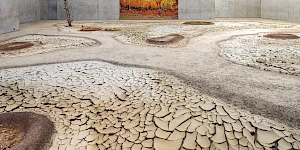
The Climate Forum is a series of online meetings hosted by HDK-Valand within L’Internationale’s Museum of the Commons programme. The series builds upon earlier research resulting in the (2022) book Climate: Our Right to Breathe and reaches toward emerging change practices.
-
The Open Kitchen. Food networks in an emergency situation

with Marina Monsonís, the Cabanyal cooking, Resistencia Migrante Disidente and Assemblea Catalana per la Transició Ecosocial
The MACBA Kitchen is a working group situated against the backdrop of ecosocial crisis. Participants in the group aim to highlight the importance of intuitively imagining an ecofeminist kitchen, and take a particular interest in the wisdom of individuals, projects and experiences that work with dislocated knowledge in relation to food sovereignty. -
–M HKA
The Geopolitics of Infrastructure

The exhibition The Geopolitics of Infrastructure presents the work of a generation of artists bringing contemporary perspectives on the particular topicality of infrastructure in a transnational, geopolitical context.
-
–MACBAMuseo Reina Sofia
School of Common Knowledge 2025
The second iteration of the School of Common Knowledge will bring together international participants, faculty from the confederation and situated organizations in Barcelona and Madrid.
-
–SALT
The Lives of Animals, Salt Beyoğlu
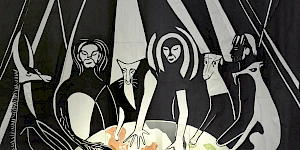
‘The Lives of Animals’ is a group exhibition at Salt that looks at the subject of animals from the perspective of the visual arts.
-
–SALT
Plant(ing) Entanglements

The series of sound installations Warm Earth Sounds for Plants and the People Who Love Them ends with Fulya Uçanok’s sound installation Plant(ing) Entanglements.
-
–Museo Reina Sofia
Sustainable Art Production. Research Residencies
The projects selected in the first call of the Sustainable Art Practice research residencies are A hores d'ara. Experiences and memory of the defense of the Huerta valenciana through its archive by the group of researchers Anaïs Florin, Natalia Castellano and Alba Herrero; and Fundamental Errors by the filmmaker and architect Mauricio Freyre.
-
–IMMANCAD
Summer School: Landscape (post) Conflict
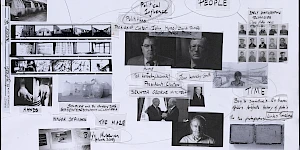
The Irish Museum of Modern Art and the National College of Art and Design, as part of L’internationale Museum of the Commons, is hosting a Summer School in Dublin between 7-11 July 2025. This week-long programme of lectures, discussions, workshops and excursions will focus on the theme of Landscape (post) Conflict and will feature a number of national and international artists, theorists and educators including Jill Jarvis, Amanda Dunsmore, Yazan Kahlili, Zdenka Badovinac, Marielle MacLeman, Léann Herlihy, Slinko, Clodagh Emoe, Odessa Warren and Clare Bell.
-
HDK-Valand
Climate Forum IV
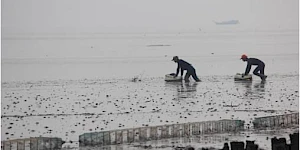
The Climate Forum is a series of online meetings hosted by HDK-Valand within L’Internationale’s Museum of the Commons programme. The series builds upon earlier research resulting in the (2022) book Climate: Our Right to Breathe and reaches toward emerging change practices.
-
–MSU Zagreb
October School: Moving Beyond Collapse: Reimagining Institutions
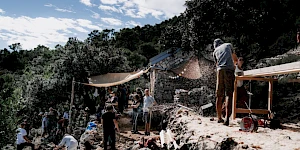
The October School at ISSA will offer space and time for a joint exploration and re-imagination of institutions combining both theoretical and practical work through actually building a school on Vis. It will take place on the island of Vis, off of the Croatian coast, organized under the L’Internationale project Museum of the Commons by the Museum of Contemporary Art in Zagreb and the Island School of Social Autonomy (ISSA). It will offer a rich program consisting of readings, lectures, collective work and workshops, with Adania Shibli, Kristin Ross, Robert Perišić, Saša Savanović, Srećko Horvat, Marko Pogačar, Zdenka Badovinac, Bojana Piškur, Theo Prodromidis, Ovidiu Ţichindeleanu, Progressive International, Naan-Aligned cooking, and others.
-
HDK-Valand
MA Forum in collaboration with LIO: Nour Shantout

In this artist talk, Nour Shantout will present Searching for the New Dress, an ongoing artistic research project that looks at Palestinian embroidery in Shatila, a Palestinian refugee camp in Lebanon. Welcome!
Related contributions and publications
-
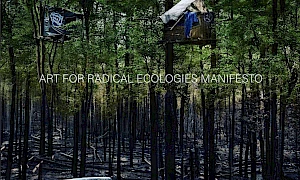
Art for Radical Ecologies Manifesto
Institute of Radical ImaginationLand RelationsClimateInstitute of Radical Imagination -

Decolonial aesthesis: weaving each other
Charles Esche, Rolando Vázquez, Teresa Cos RebolloLand RelationsClimate -

Climate Forum I – Readings
Nkule MabasoEN esLand RelationsClimateHDK-Valand -

…and the Earth along. Tales about the making, remaking and unmaking of the world.
Martin PogačarLand RelationsClimatePast in the Present -
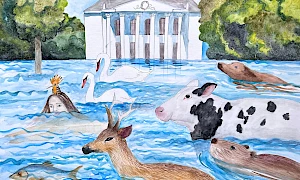
Pollution as a Weapon of War
Svitlana MatviyenkoClimate -
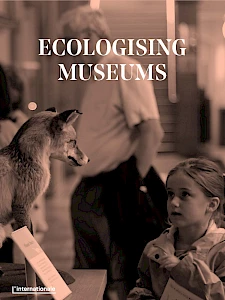
Ecologising Museums
Land Relations -
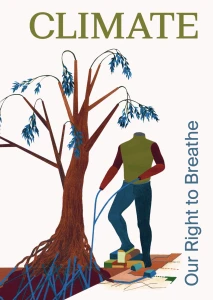
Climate: Our Right to Breathe
Land RelationsClimate -
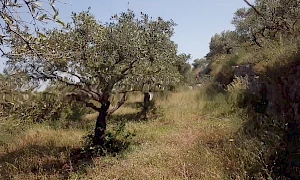
A Letter Inside a Letter: How Labor Appears and Disappears
Marwa ArsaniosLand RelationsClimate -

Seeds Shall Set Us Free II
Munem WasifLand RelationsClimate -
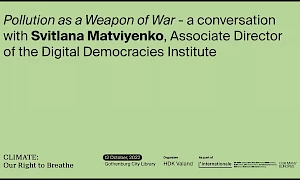
Pollution as a Weapon of War – a conversation with Svitlana Matviyenko
Svitlana MatviyenkoClimateClimate book launchHDK-Valand -

Françoise Vergès – Breathing: A Revolutionary Act
Françoise VergèsClimateClimate book launchHDK-Valand -

Ana Teixeira Pinto – Fire and Fuel: Energy and Chronopolitical Allegory
Ana Teixeira PintoClimateClimate book launchHDK-Valand -

Watery Histories – a conversation between artists Katarina Pirak Sikku and Léuli Eshrāghi
Léuli Eshrāghi, Katarina Pirak SikkuClimateClimate book launchHDK-Valand -
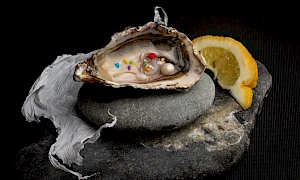
Discomfort at Dinner: The role of food work in challenging empire
Mary FawzyLand RelationsSituated Organizations -

Indra's Web
Vandana SinghLand RelationsPast in the PresentClimate -
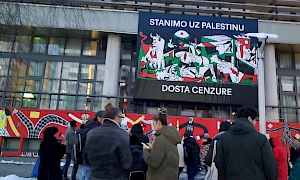
The Silence Has Been Unfolding For Too Long
The Free Palestine Initiative CroatiaInternationalismsPast in the PresentSituated OrganizationsInstitute of Radical ImaginationMSU Zagreb -
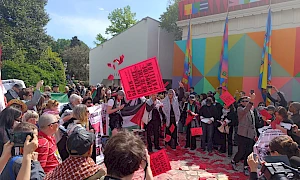
En dag kommer friheten att finnas
Françoise Vergès, Maddalena FragnitoEN svInternationalismsLand RelationsClimateInstitute of Radical Imagination -
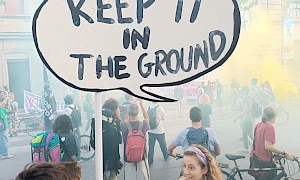
Art and Materialisms: At the intersection of New Materialisms and Operaismo
Emanuele BragaLand RelationsClimateInstitute of Radical Imagination -
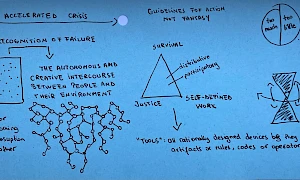
Dispatch: Harvesting Non-Western Epistemologies (ongoing)
Adelina LuftLand RelationsSchoolsClimatetranzit.ro -
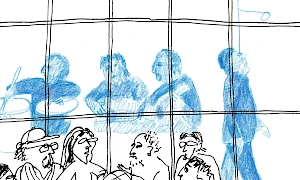
Dispatch: From the Eleventh Session of Non-Western Technologies for the Good Life
Ana KunLand RelationsSchoolstranzit.ro -
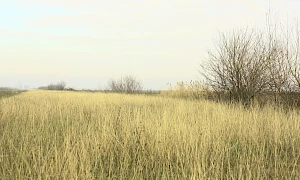
Dispatch: Practicing Conviviality
Ana BarbuClimateSchoolsLand Relationstranzit.ro -
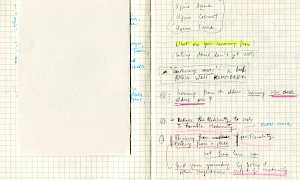
Dispatch: Notes on Separation and Conviviality
Raluca PopaLand RelationsSchoolsSituated OrganizationsClimatetranzit.ro -

Dispatch: The Arrow of Time
Catherine MorlandClimatetranzit.ro -
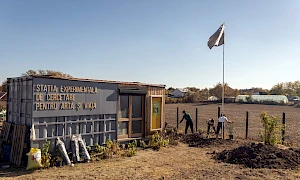
To Build an Ecological Art Institution: The Experimental Station for Research on Art and Life
Ovidiu Ţichindeleanu, Raluca VoineaLand RelationsClimateSituated Organizationstranzit.ro -
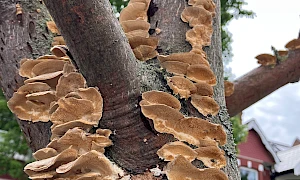
Dispatch: A Shared Dialogue
Irina Botea Bucan, Jon DeanLand RelationsSchoolsClimatetranzit.ro -
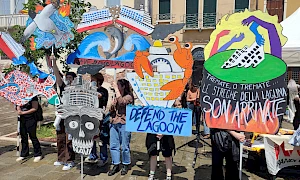
Art, Radical Ecologies and Class Composition: On the possible alliance between historical and new materialisms
Marco BaravalleLand RelationsClimateInstitute of Radical Imagination -
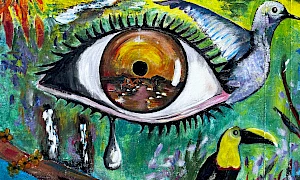
‘Territorios en resistencia’, Artistic Perspectives from Latin America
Rosa Jijón & Francesco Martone (A4C), Sofía Acosta Varea, Boloh Miranda Izquierdo, Anamaría GarzónLand RelationsClimateInstitute of Radical Imagination -
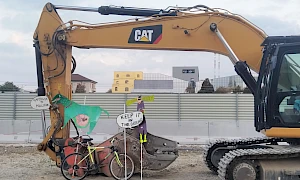
Unhinging the Dual Machine: The Politics of Radical Kinship for a Different Art Ecology
Federica TimetoLand RelationsClimateInstitute of Radical Imagination -

Cultivating Abundance
Åsa SonjasdotterLand RelationsClimatePast in the Present -
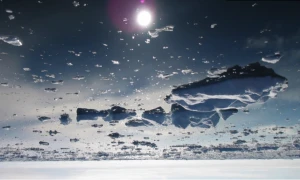
Climate Forum II – Readings
Nkule Mabaso, Nick AikensLand RelationsClimateHDK-Valand -
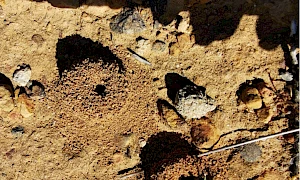
Klei eten is geen eetstoornis
Zayaan KhanEN nl frLand RelationsClimatePast in the Present -
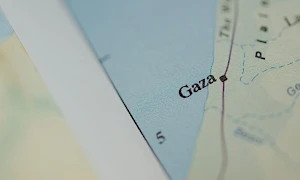
Glöm ”aldrig mer”, det är alltid redan krig
Martin PogačarEN svLand RelationsPast in the Present -
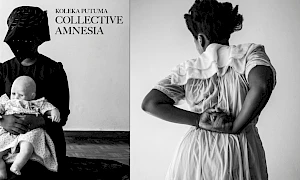
Graduation
Koleka PutumaLand RelationsClimate -
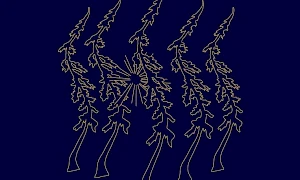
Depression
Gargi BhattacharyyaLand RelationsClimate -
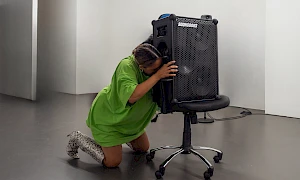
Climate Forum III – Readings
Yolande Zola Zoli van der HeideLand RelationsClimate -
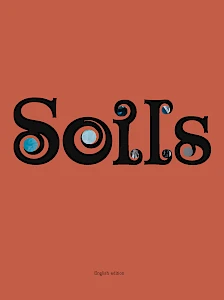
Soils
Land RelationsClimateVan Abbemuseum -

Dispatch: There is grief, but there is also life
Cathryn KlastoLand RelationsClimate -
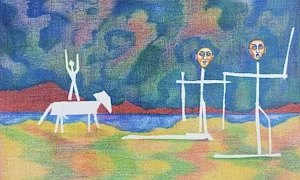
Beyond Distorted Realities: Palestine, Magical Realism and Climate Fiction
Sanabel Abdel RahmanEN trInternationalismsPast in the PresentClimate -

Dispatch: Care Work is Grief Work
Abril Cisneros RamírezLand RelationsClimate -
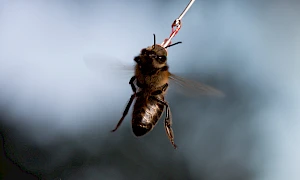
Reading List: Lives of Animals
Joanna ZielińskaLand RelationsClimateM HKA -

Sonic Room: Translating Animals
Joanna ZielińskaLand RelationsClimate -
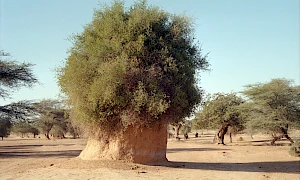
Encounters with Ecologies of the Savannah – Aadaajii laɗɗe
Katia GolovkoLand RelationsClimate -
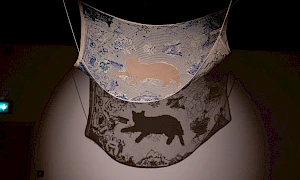
Trans Species Solidarity in Dark Times
Fahim AmirEN trLand RelationsClimate -

Reading List: Summer School, Landscape (post) Conflict
Summer School - Landscape (post) ConflictSchoolsLand RelationsPast in the PresentIMMANCAD -

Solidarity is the Tenderness of the Species – Cohabitation its Lived Exploration
Fahim AmirEN trLand Relations -
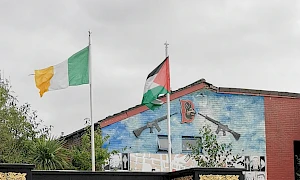
Dispatch: Reenacting the loop. Notes on conflict and historiography
Giulia TerralavoroSchoolsLand RelationsIMMANCAD -
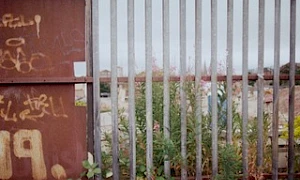
Dispatch: Haunting, cataloging and the phenomena of disintegration
Coco GoranSchoolsLand RelationsIMMANCAD -
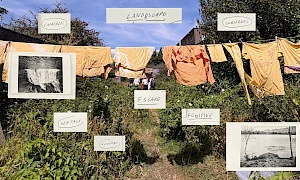
Dispatch: Landescape – bending words or what a new terminology on post-conflict could be
Amanda CarneiroSchoolsLand RelationsIMMANCAD -
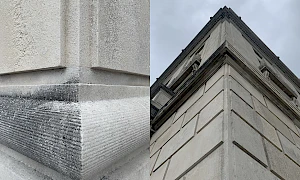
Dispatch: Landscape (Post) Conflict – Mediating the In-Between
Janine DavidsonSchoolsLand RelationsIMMANCAD -
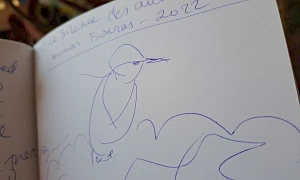
Dispatch: Excerpts from the six days and sixty one pages of the black sketchbook
Sabine El ChamaaSchoolsLand RelationsIMMANCAD -
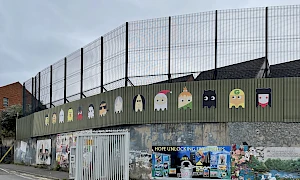
Dispatch: Withstanding. Notes on the material resonance of the archive and its practice
Giulio GonellaSchoolsLand RelationsIMMANCAD -
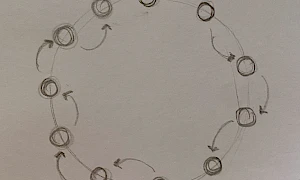
Climate Forum IV – Readings
Merve BedirLand RelationsHDK-Valand -
Land Relations: Editorial
L'Internationale Online Editorial BoardLand Relations -
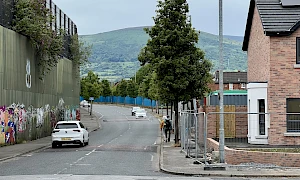
Dispatch: Between Pages and Borders – (post) Reflection on Summer School ‘Landscape (post) Conflict’
Daria RiabovaSchoolsLand RelationsIMMANCAD -
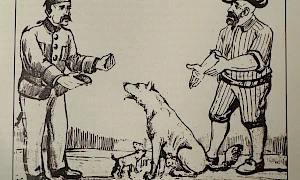
Between Care and Violence: The Dogs of Istanbul
Mine YıldırımLand Relations -
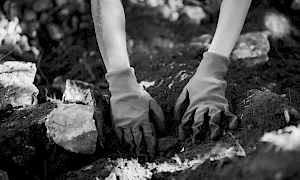
Reading list: October School. Reimagining Institutions
October SchoolSchoolsSituated OrganizationsClimateMSU Zagreb -
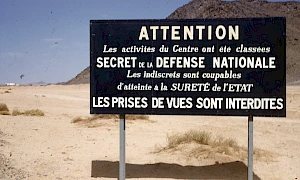
The Debt of Settler Colonialism and Climate Catastrophe
Nataša Petrešin-Bachelez, Olivier Marbœuf, Samia Henni, Marie-Hélène Villierme and Mililani GanivetLand Relations